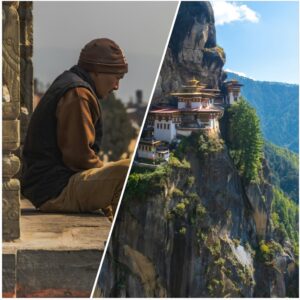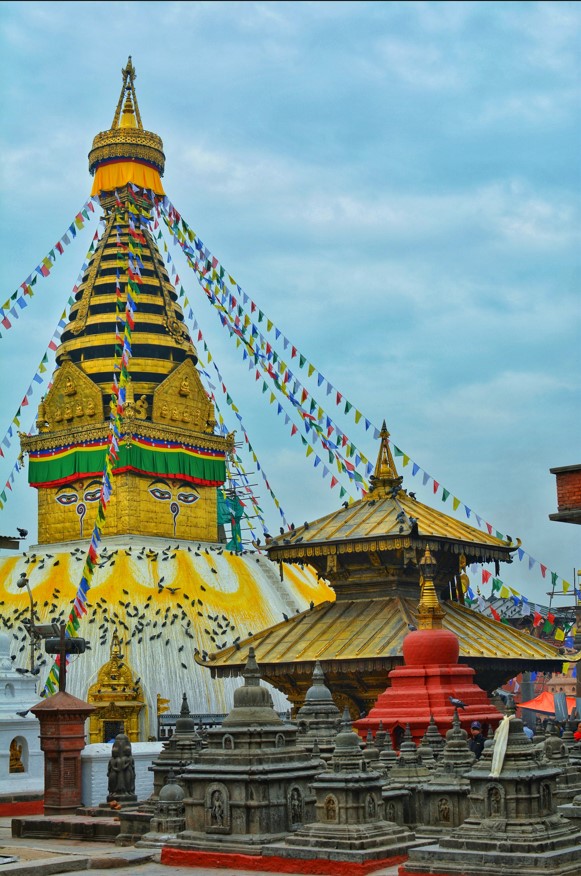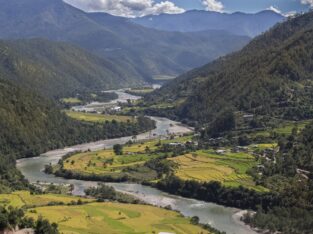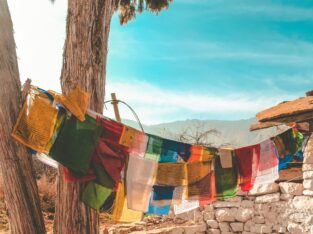Tailor made holidays to Bhutan & Nepal.
GENUINE PEOPLE – PRISTINE NATURE – UNIQUE CULTURE – MAGNIFICENT SIGHTS.
Start your journey in the mystical mountains of Bhutan, where you’ll trek up to the breathtaking Tiger’s Nest Monastery, explore serene villages, and witness Bhutan’s unique way of life that’s centered around Gross National Happiness. From the vibrant colours of Paro and Thimphu to the sacred peaks and prayer flags fluttering in the wind, Bhutan feels like stepping into a fairytale.
Extend your journey to Nepal if time and budget allows. A short flight takes you to the bustling streets of Kathmandu, where ancient temples, lively markets, and the backdrop of the mighty Himalayas await. In Nepal, you could take a sunrise trip to see Everest from Nagarkot, or stroll through the UNESCO heritage sites of Kathmandu Valley. This trip will give you the chance to experience two different yet equally enchanting worlds in one unforgettable journey.
Bhutan highlights.
- Paro Taktsang (Tiger’s Nest Monastery): A must-see, this iconic monastery clings to a cliff 3,000 feet above the Paro Valley—both an inspiring hike and an awe-inspiring view.
- Thimphu (Capital City): Explore Bhutan’s charming capital with attractions like the Tashichho Dzong, Buddha Dordenma (a massive Buddha statue), and the unique weekend markets.
- Dochula Pass: Marvel at 108 chortens (stupas) set against panoramic Himalayan views—a picturesque and spiritual spot, especially stunning on clear days.
- Punakha Dzong: One of Bhutan’s most beautiful and historic fortresses, set between rivers, surrounded by jacaranda trees, and famous for its unique architecture.
- Phobjikha Valley: Known as the “valley of black-necked cranes,” this tranquil, scenic valley is a haven for wildlife and a great place for nature walks.
- Local Festivals (Tsechus): If you time it right, experiencing a traditional Bhutanese festival, or tsechu, is a colorful and lively way to see masked dances, religious ceremonies, and cultural traditions.
- Traditional Farm Stay: Spend a night in a Bhutanese farmhouse to experience the warm hospitality, authentic food, and simple lifestyle of rural Bhutan.
- Bhutanese Cuisine: Try the local delicacies like ema datshi (chili cheese), momos (dumplings), and Bhutanese butter tea—flavors that are unique to this country.
- Hiking and Nature Trails: Whether it’s a short hike or a more challenging trek, Bhutan’s landscapes are perfect for outdoor adventures, offering everything from mountain views to dense forests and rivers.
Nepal highlights.
- Kathmandu Valley and Durbar Squares: Wander through the ancient Durbar Squares in Kathmandu, Bhaktapur, and Patan, with their historic temples, palaces, and vibrant local life.
- Everest Scenic Flight or Trekking: If trekking isn’t on the agenda, take a scenic flight for stunning views of Everest and the Himalayas. For trekkers, the Annapurna and Everest regions offer legendary trails.
- Swayambhunath (Monkey Temple): An iconic stupa overlooking Kathmandu, famous for its panoramic views, colorful prayer flags, and, of course, the resident monkeys.
- Pashupatinath Temple and Boudhanath Stupa: Explore the spiritual heart of Nepal at these UNESCO sites; Pashupatinath is a sacred Hindu temple, while Boudhanath is one of the largest and most important Buddhist stupas.
- Pokhara and Phewa Lake: Relax by the serene Phewa Lake, with stunning Himalayan views and a gateway to adventure sports like paragliding, zip-lining, and boating.
- Nagarkot: A hill station just outside Kathmandu, famous for its breathtaking sunrise views over the Himalayas, including Everest on clear days.
- Chitwan National Park: For a taste of Nepal’s wildlife, head to Chitwan for jungle safaris, where you might spot rhinos, elephants, and, if lucky, Bengal tigers.
Best time to visit Bhutan.
The best time to visit Bhutan is typically during the spring (March to May) and autumn (September to November). Here’s why these seasons are ideal:
Spring (March to May): This is one of the most beautiful times in Bhutan. The weather is mild, and the landscapes are vibrant with blooming rhododendrons, magnolias, and other wildflowers, especially in higher altitudes. Spring is also a great time for festivals like Paro Tsechu, where you can experience Bhutan’s rich cultural traditions.
Autumn (September to November): Autumn offers clear skies and comfortable temperatures, making it perfect for outdoor activities like trekking and sightseeing. Views of the Himalayas are stunning during this season, and it’s also a popular time for festivals, like Thimphu Tsechu, which draws both locals and travelers.
While these two seasons are ideal, winter (December to February) can be a good option for lower altitude areas if you prefer fewer crowds, and summer (June to August) brings lush green landscapes, though it’s also the monsoon season, with occasional rainfall.
Best time to visit Nepal.
The best times to visit Nepal are during autumn (late September to November) and spring (March to May). Here’s a breakdown of why these seasons are ideal:
Autumn (late September to November): This is the most popular time to visit Nepal, thanks to the clear skies, mild temperatures, and stunning views of the Himalayas. Autumn is ideal for trekking in popular regions like Everest and Annapurna, with comfortable weather and spectacular mountain vistas. This season also coincides with major festivals like Dashain and Tihar, giving visitors a chance to experience Nepalese culture at its most festive.
Spring (March to May): Spring offers warm weather, clear skies, and beautiful rhododendron blooms that add color to the mountain trails, especially in areas like Annapurna. It’s an excellent time for trekking, as the temperatures are comfortable and the mountain views are clear, especially in the mornings.
While autumn and spring are best, winter (December to February) can be a good time for lower-altitude treks and cultural tours around Kathmandu and Pokhara, though higher-altitude areas are quite cold. Summer (June to August) is monsoon season, bringing heavy rains and landslides in some regions, though it’s still possible to explore rain-shadow areas like Mustang and Dolpo.
Bhutan Location Map






































